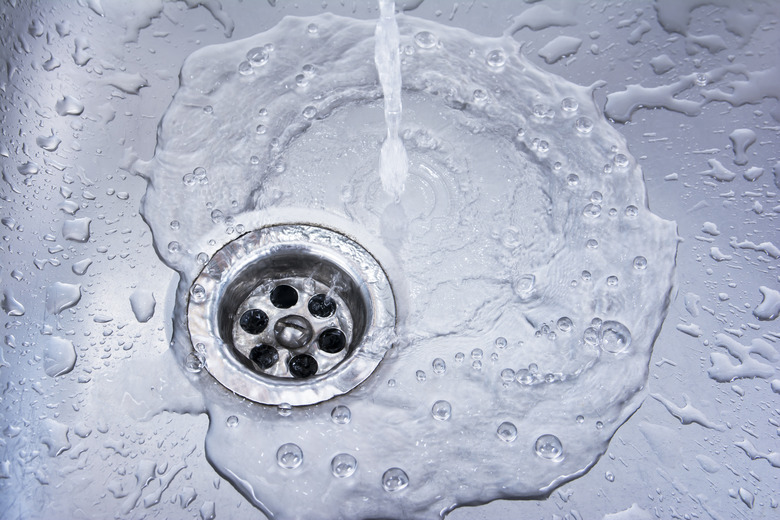How To Remove Wax From Drains
We may receive a commission on purchases made from links.
You might have thought pouring a candle's hot wax down the drain was the safest way to get rid of it, but now that it has hardened and formed a drain clog, you realize the error of your ways. OK, so you won't do that again, but how do you get the hardened wax out of the drain? That depends on whether it has caused a partial clog or stopped the drain completely.
Don't Use Drano for Candle Wax
Don't Use Drano for Candle Wax
One thing you don't want to do is use a caustic drain cleaner, such as Liquid-Plumr or Drano for candle wax. Sodium hydroxide and sodium hypochlorite, the main ingredients in most commercial drain cleaners, can dissolve grease, but they won't react at all with paraffin. It's best to stay away from caustic cleaners anyway, because they can damage the pipes and they aren't great for the environment.
Which Chemicals Dissolve Candle Wax?
Which Chemicals Dissolve Candle Wax?
Cleaning expert Dan Miller reports in Today that the only chemicals you're likely to have around the house that can dissolve candle wax are acetone and isopropyl alcohol. The problem with using them is that they need time to work. If the drain is completely stopped, and you can get all the water out (which will be difficult), pouring in some alcohol may gradually soften the clog, but if it's just a partial clog, the chemical will just flow over the wax on its way to pollute the septic or waste system and have little effect.
You could also try using a less toxic wax remover, such as McKee's Wax Remover, but you're likely to have the same problem. Unless it can stay in contact with the wax without being diluted by water in the drain, it probably won't have much effect.
Pour Boiling Water
Pour Boiling Water
If you're looking for an easy solution that doesn't involve any plumbing, you can try softening the wax with boiling water. If the drain is completely clogged, you may be able to soften the wax enough to move it with a plunger, and if the drain is partially clogged, you might not even need the plunger.
Fill a pot or kettle with water, bring the water to a boil, pour it in a completely clogged drain and let the water back up until there's about an inch of hot water in the bottom of the sink. Fill the cup of a sink plunger with hot water, invert it in the sink before the water falls out, move the plunger over the drain and give it several vigorous pumps. If water doesn't start going down the drain, add more hot water to maintain the temperature and try again as many times as it takes to convince yourself that it isn't going to work.
If the drain has a partial clog, just keep pouring boiling water in the drain, and as the wax softens and loosens, it should begin to flow down the drain. There's no guarantee this method will work, but it might, and it's easy.
Disassemble the P-Trap
Disassemble the P-Trap
The hardened wax has almost certainly collected at the bottom of the P-trap, and the most reliable way to get it out is to disassemble the trap and manually remove it. As PlumbingSupply.com advises, this merely involves unscrewing the two nuts on either side of the bent portion of the trap, which you may be able to do by hand. If not, use tongue-and-groove pliers.
Once the nuts are loose, remove the bent portion and take it outside for a good cleaning with a kitchen knife. You may also find wax in the horizontal pipe still connected to the drain, and you can chip that out with a knife as well. Once you're done, reassemble the trap and flush the drain with boiling water to take care of any residue.
